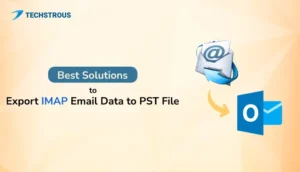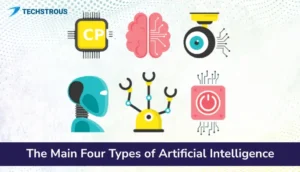Overview
In this article, we will discuss IoT protocols and standards. What are the different types of IoT communication protocols integrated in a system? Along with that, we will also share their features so that you can identify the most suitable option for your system. Read the article till the end for complete information.
What are the IoT Protocols and Standards?
IoT protocols and standards are the rules established in an IoT system so that every IoT device can transmit data swiftly. From a small IoT system to a large-scale network of IoT devices, these protocols and standards make it possible for every device to communicate without any barrier.
The data transfer between the devices could be commands or information that needs to be transmitted further.
What are the Important Layers in IoT Architecture?
An IOT system consists of numerous components. Therefore, it becomes important to categorize all these components to simplify the understanding of the IoT architecture. Also, it helps in easily rectifying any issues occurring in the system by fixing the target layer. There are different frameworks available to define the IoT layers but the most comprehensive and easy to understand framework is the OSI (Open System Interconnections) model.
As per the OSI model, an IoT system is made of 7 layers: Application layer, Presentation Layer, Session Layer, Transport Layer, Network Layer, Data Link Layer, and Physical Layer. These layers are sorted in a top-down manner, which means the components of an IoT system that is used by a typical person is placed at the top – Application Layer.
- Application Layer – The medium through which you interact with the IoT system is placed in the Application layer. The examples are mobile applications or web-applications.
- Presentation Layer – This layer makes the data collected by the IoT device readable by encrypting the information into an easy to comprehend format.
- Session Layer – A session is opened for transmitting the information from the IoT device to other components of the IoT system. The Session layer controls the session for sending and receiving the data.
- Transport Layer – The data collected in an IoT system is traveled in the form of packets of information. This transportation of data is regulated by the transport layer.
- Network Layer – After the transport layer, the next layer is the Network Layer. Its role in the IoT system to manage where and how to transmit the data. A typical component of this layer is Router.
- Data Link Layer – This layer establishes, maintains and terminates the connection between different devices in an IoT network. It also corrects any error generated to ensure consistent flow of data.
- Physical Layer – It is the lowest layer of IoT architecture in OSI model. It includes components, which convert the data into electrical signals or light pulses like cables, connectors, cell towers, etc.
What are different IoT Protocols and Standards used by IoT Devices?
Two major protocols are used in an IoT system: data and network. Both these IoT standards are necessary for a system to operate. For each category, we will discuss some of the most popular IoT protocol lists so that you can choose a suitable type for your system.
Also Read: How IoT Works – A Complete Explanation
#1. IoT Data Protocol
IoT Data Protocol is accountable for the structuring and formatting of data which is interpreted by devices in an IoT system. It mainly governs how the information is encoded, not how it is transmitted. A few common examples of IoT Data protocol and standards are mentioned below:
CoAP (Constrained Application Protocol)
In simple terms, CoAP is a lightweight version of HTTP and is a language specialized protocol. The conventional Internet connection for communication requires high storage and drains more battery. The devices used in an IoT system are of limited resources. Therefore, the CoAP helps them for transferring data efficiently with these limited resources.
XMPP (Extensible Messaging and Presence Protocol)
Extensible Messaging and Presence Protocol or XMPP is an open source communication protocol used in IoT systems for transmitting information among IoT devices. The key characteristic of XMPP is that it supports different instant messaging applications like Facebook Messenger, Google Hangout, etc.
The IoT devices are given an ID for communication which is similar to an email address. Also, it provides features like real-time communication, multi-party chat, etc. Customization of this protocol for transferring structured data like formatted texts is also feasible.
MQTT (Message Queuing Telemetry Transport)
It is a publish/subscribe message protocol that is ideal for communication of low-power devices. The main attribute of Message Queuing Telemetry Transport (MQTT) is its speed and efficiency. It works when the network connection is low and devices have limited resources. It makes the data transfer quick for IoT devices.
Further features of this network IoT protocol and standard are: fast bi-directional messaging, secure connection, data transfer in unreliable networks and among millions of low power IoT devices.
AMQP (Advanced Message Queuing Protocol)
Advanced Message Queuing Protocol or AMQP is an IoT protocol suitable for cases where high precision and security is top priority. It is fast, secure, sustains the order of information and its routing. Compared with MQTT, it is advanced and used for sophisticated applications like in industries where the IoT system requires precision and reliability. Low power consumption is not necessary as in case of MQTT.
HTTP (HyperText Transfer Protocol)
The next IoT protocol is HyperText Transfer Protocol (HTTP). It enables the IoT devices to connect to a web server for data exchange. It provides numerous benefits over other IoT protocols like security enhancement, API Integration, interoperability, management of IoT devices via remote, real time event notification, etc.
HTTP improves the quality of data transfer in IoT systems. You can manage the devices using a mobile application or web application. It is the foundation of all modern data transfer protocols.
DDS (Data Distribution Service)
It is another publish/subscribe model that enables different IoT devices in your system to interact with each other efficiently and transfer data to a central control system. It is a low power consumption model like MQTT but is more efficient. The main difference between DDS and MQTT is that the former is independent of hardware compatibility.
Therefore, it can be deployed from the smallest IoT device in a system to the web server. All devices can share information without any compatibility issues. Some of the prominent characteristics of DDS protocol are: scalability, reliability, real-time data transfer and compatibility.
WebSocket
Websocket allows continuous data transfer between different IoT devices in a single TCP connection. Also, it removes all complexities in communication by employing a standard protocol. It supports bidirectional data transfer. Because of the continuous communication between multiple IoT devices, it is ideal for IoT systems that act as a client or server.
#2. IoT Network Protocol
IoT Network Protocols manages how the data is transmitted among different devices in an IoT system. This IoT communication protocol includes tasks like, routing, addressing, error detection and rectification to ensure a consistent flow of information. Some of the popular network protocols are explained below.
Cellular or LTE
LTE is a standard that enables the IoT devices to transfer data with each other and with the Internet over a cellular network. It is a high speed communication medium for transferring large amounts of data quickly.
An IoT application of LTE is when you access cameras of your home or office via smartphone or tablet over the cellular network, you are using LTE. It is ideal for fast data transfer but not suitable for low power devices.
Wifi
It is the most popular and easily accessible among all IoT protocols and standards for communication between IoT devices and to the Internet. In Wifi, a device which has an Internet connection like a mobile or computer shares a broadcast signal that enables the other device to use its internet connection.
Although it is suitable for transferring large volumes of data, it has a limitation of high power consumption.
LWM2M (LightWeight M2M)
Lightweight M2M or LWM2M is a lightweight communication protocol that facilitates resource-constrained IoT devices to communicate with each other and the central server. Because of low power consumption, you can employ this network protocol to a system which consists of hundreds or even thousands of sensors.
LWM2M is ideal for secure machine to machine communication without any human intervention. Also, it helps to manage your IoT devices and sensors remotely.
Bluetooth
It is one of the most popular wireless data transfer technologies that is currently integrated in a number of devices like smartphones, tablets, PCs, wearable devices, etc. It is a short range communication technology that uses radio waves to transmit data to battery-powered devices.
Z-waves
Best suited for home application IoT systems of low powered devices, Z-waves are wireless radio frequencies that operate on around 900 MHz. Therefore, it does not interfere with other wireless communication mediums like Wifi and bluetooth.
An IoT system integrated with Z waves has a controller or central hub which manages all devices within the system.
Another key feature of this IoT protocol and standard is that it has a mesh network which means every IoT device in the system acts like a node and is connected to other devices through multiple routes. Therefore, if one path is not working, the data will be transmitted via another alternative path.
Zigbee
It is similar to bluetooth network protocol in many of its features. However, it is more conformed for IoT systems than the conventional bluetooth technology. It is highly secure and consumes low power which makes it ideal for limited resources devices.
Zigbee offers a reach of 200 meters which is greater than bluetooth. Because of its suitability for IoT systems, most devices come with the supportability of ZigBee’s self-healing grid topology model and open standard self-assembly.
Threads
Threads are another IoT protocol designed specifically for low power devices and wireless communication. It is similar to Zigbee and Wi-fi but the key characteristic is low power consumption.
It uses IPv6 based network protocol which makes it directly addressable over the Internet. Another feature of this network protocol is interoperability. So, a Thread-enabled device can easily be integrated in a system that uses other IoT protocols and standards.
LoRaWAN (Long Range WAN)
Long Range Wide Area Network or LoRaWAN is a communication protocol that helps low-power battery-operated IoT devices to connect to the Internet. Unlike Bluetooth, Wifi, Zigbee and Threads, LoRaWAN enables the IoT devices to connect over a wide range.
It is secure and scalable. Hence, if your IoT system consists of thousands of devices, LoRaWAN allows all the devices to transfer data efficiently. One drawback of this network protocol is its low data transfer rate. Therefore, if speed is your priority, this communication medium will not be the best.
Bottom Line
IoT protocols and standards are the rules that govern how the IoT devices in a system communicate and transmit data. The two main categories of IoT communication protocols are data protocol and network protocols. IoT data protocols are responsible for encoding data such that it is easily interpretable with other devices. Whereas, the network protocol decides the data transmission medium.
Frequently Asked Questions
What are the 4 main Iot Network protocols?
The IoT network protocols are mainly categories into four categories:
- Cellular – This type of network protocols uses cellular data for communication and data transfer.
- LAN/PAN – Local Area Network (LAN) and Personal Area Network (PAN) enables IoT devices to connect with each other or to the internet via ethernet cable or wireless medium for short range.
- LPWAN – Low Power Wide Area Network or LPWAN is ideal for long range communication with low power consumption. Therefore, it is integrated in devices that operate on battery power for long durations.
- Mesh Protocol – In mesh protocol every device directly connects to each other without depending on a central hub for transferring data. Some examples are Zigbee, Z-waves, Threads, etc.
What does MQTT stand for?
Message Queuing Telemetry Transport or MQTT is a publish/subscribe message protocol designed for connecting low-power devices for data transfer.




